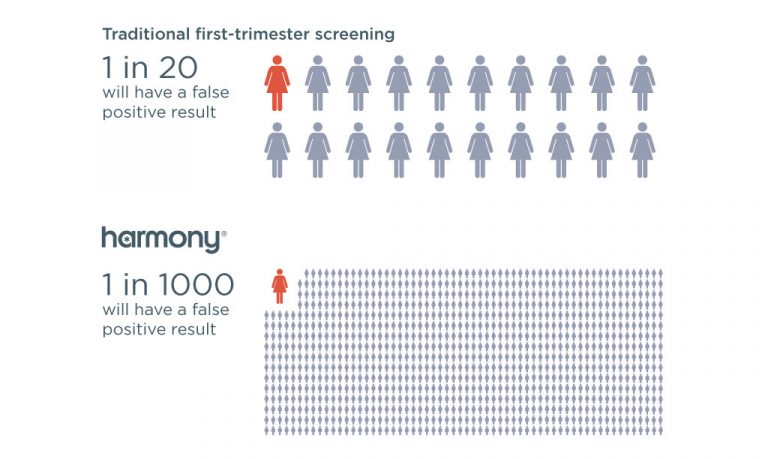
An essential step in providing a peace of mind, prenatal testing ensures that pregnant mothers stay informed about the status of their pregnancy. Non-Invasive Prenatal Testing (NIPT) is a screening test that analyses DNA from the pregnancy that exists in the mother’s blood to screen for common chromosomal conditions at as early as 10 weeks. The Harmony test can be performed in singleton, twin, as well as IVF (including egg donor) pregnancies. It can also identify the sex of your baby.
Chromosomal conditions can occur in any pregnancy. The Harmony prenatal test screens for the most common ones, including:
- Trisomy 21 (Down syndrome), trisomy 18 (Edwards syndrome) and trisomy 13 (Patau syndrome)
- 22q11.2 microdeletion
- Monosomy X
- Sex chromosome aneuploidies (SCA)
WHY HARMONY TEST?
It is the most proven cell-free DNA prenatal test available, studied in more than 48 peer-reviewed publications.1
Landmark study showed Harmony test with superior performance against first-trimester screening in both high and average risk pregnancies for Down syndrome.2

With the Harmony test, fewer than 1 in 1000 pregnant women will receive a positive result for trisomy 21 (Down syndrome) in an unaffected pregnancy.3 With traditional first-trimester screening, 1 in every 20 results for trisomy 21 is a false positive,2 which can lead to anxiety and unnecessary invasive procedures.
Taking the Harmony Non-Invasive Prenatal Test with Quest consists of 3 simple steps:
- Take a blood test at the doctor’s office at 10 weeks or later into a pregnancy.
- The blood sample is sent to the referral lab for analysis.
- Test results are delivered by Quest to the ordering doctor in about 10-14 business days.
Patients are advised to consult obstetricians on eligibility before taking these tests.

References:

